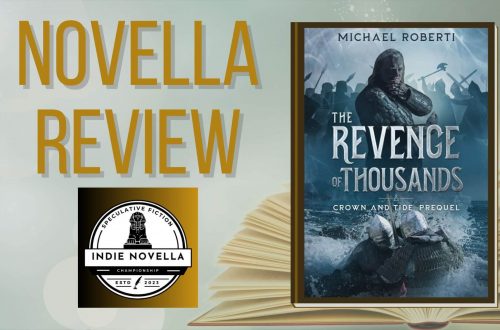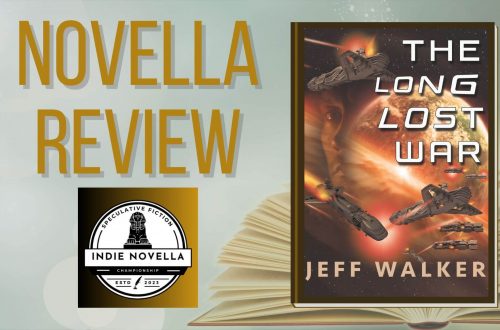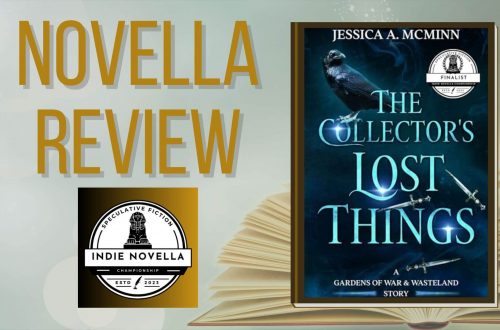There’s a lot of writing advice out there. Literally everyone has rules and opinions on how to start writing, how to keep writing, how to write well. You’ve probably heard these most common rules:
- Write every day.
- Don’t use adverbs.
- Show, don’t tell.
- Only use said in dialogue.
- Never start a book with a prologue.
- Never open a story with; the weather, a dream sequence, or describing the main character in the mirror.
- Kill your darlings.
- And so on…
I’ve met writers who are terrified of breaking these writing rules. “Am I allowed to use an adverb here?” or “Is it okay if I write X, Y or Z?” They don’t want to be exposed as a bad writer. As a fraud. I’ve honestly spoken to new writers who believe they’ll never be published if they break the accepted writing rules.
But like my dad used to say; rules are meant to be broken!
If we all adhered to a strict set of writing rules, all books would read pretty similar and get boring quick. The point of these rules isn’t so you can never break them; it’s to understand why these rules exist in the first place so you can decide when to break them. A book that is riddled with adverbs may be a tough slog to get through, but that doesn’t mean you can’t use them at all. Sometimes a sentence could benefit from a good adverb every now and then. And if you showed everything, even the small scenes and quiet movements, then your word count would be huge! The key is to decide on when.
Even books which are riddled with adverbs aren’t necessarily bad books. J. K. Rowling’s Harry Potter takes some liberties with adverbs and is often mocked for its writing style. But Harry Potter is also a worldwide phenomenon which ignited a passion for books in young readers, spawned multiple films and sequels, and could well be regarded as one of the most popular book franchises of all time. Even years after its release, the Harry Potter fandom is still going. I don’t think readers care about the overuse of adverbs and writing style.
Similarly, breaking the rules can lead to unique written styles such as Cormac McCarthy’s The Road, which is one long haunting story without any scene or chapter breaks. And it works.
I fear that many beginner writers get bogged down with following the rules, so let’s take a look at why they are a rule and how you can break them.
Write Every Day
Nope. Don’t need to. Sure, writing every day can help build up a habit if you know you struggle to stick to a routine, but writing every day can also put you under unnecessary pressure and stress you out if you happen to fail. I’m not saying you’ll fail out of doubt. Real life can get in the way of writing, and really, it should. I love writing and don’t get through a day without thinking or talking about it even if I don’t manage to get the words down. But when real life issues come calling, they need to take priority. Sacrifices need to be made in order to make time to write, and if you’ve got a deadline then there is a massive pressure to succeed, but you shouldn’t neglect your life or health to write. If you have kids, then the pressure is even worse.
Plus, you need time to rest your brain. It’s a muscle, and like exercise, you need rest days and breaks. I find that I work best after taking a break and letting the words sink in and sort themselves out subconsciously. After I finish with a big project, such as a draft, it doesn’t make sense for me to launch into something else or fill my time with just idle writing. I need a plan and a focus, and rest is part of that plan.
I have a separate blog that covers why you shouldn’t write every day. There, I suggest filling your rest days with art days!
Don’t feel guilty because you’re not writing every day. Work at your own pace and find your own routine.
Don’t Use Adverbs
Ahh, adverbs. The bane of every writer. I don’t think they deserve the hate they get. As mentioned above, the Harry Potter books are riddled with adverbs and it didn’t stop them from becoming a massive success. An adverb is a word that modifies another word such as an adjective or verb to add an extra level of description to an action. The main problem with adverbs is that they can often become a crutch and lead to lazy description. Adverbs are often used to tell the reader something, such as an emotion, without showing it. Here are some examples:
- She ran quickly through the house.
- He yelled angrily.
- She smiled cheerfully.
- He cursed loudly.
- She felt badly about making a noise.
The problem with these is that that the first one is redundant; who runs slowly? That would be a jog instead, right? The second and third are both telling emotion that could be shown instead. The fourth could also be shown with a little creativity. And the fifth is again an emotion which could be expanded upon to really show how the character feels.
A lot of this does come down to showing and not telling, which I’ll cover below.
The thing about adverbs is that you can’t remove all of them from your story. Some of them you’ll need to keep because adverbs are more than just words that end in “ly” but that’s a grammar lesson for another time. Adverbs are a tool like any other in a writer’s arsenal and so I am hesitant to follow any advice which claims a rule must absolutely be followed; and this sentence includes an adverb. See what I did there? Adverbs can be used as part of description to show. For example, describing a haunted house as “gloomy” is perfectly acceptable if you follow it up by describing what makes the haunted house gloomy; the cobwebs, the broken windows, the misty weather etc.
There’s a time and place for adverbs. And not every scene needs a detailed description. Sometimes an adverb is just fine.
Show, Don’t Tell
Other than no adverbs, the “show, don’t tell” rule is probably the most well known of the writing rules and is tied in with adverb abuse. The idea behind it is that it’s more interesting to show a character’s emotions and bad plot decisions instead of just telling it by inferring what the character is feeling and letting the reader themselves interpret the character’s actions and emotions. If you’ve sat in any high school English class then you’ll already know how to analyse the minute detail of any scene to try and understand what meaning the author was trying to convey.
Some new writers worry that if they don’t make a character’s emotions and intentions obvious enough, then the reader will miss them. Readers are smart. When you write a story, you need to trust them to interpret the meaning.
Showing, instead of telling can bring a scene to life. Let’s take our adverbs from above and rewrite them with showing in mind:
- She ran through the house and skidded on the kitchen’s tiled floor.
- He leaped from the breakfast bar, dropping his newspaper, and yelled at her to slow down.
- She smiled and waved as she slid past him. “No time, pops!”
- His curse followed her from the kitchen and could be heard through the walls.
- She didn’t mean to make a noise and cringed at his cursing. She’d make it up to him later.
Do these seem more interesting?
Showing isn’t just about describing a character emotion in a particular scene, but can also be much more. For example, if you have two characters falling in love then you can show this gradual transition over the course of an entire book by throwing them together, getting to know each other, then trusting each other, then becoming affectionate which leads to flirting and then a sudden realisation near the end that the main character is in love and the fireworks happen.
Of course, they’ll be times when telling is actually preferable to showing. If you showed everything, then the story would drag on and also get boring. Here’s an exaggerated example of showing vs telling:
She placed one foot on the soft cushioned carpet and her leg ached with the exertion of raising it up onto the next step, and the other. Each step pulled at her heavy limbs and she struggled to slow her breathing.
She felt exhausted as she walked up the stairs.
How do you know when to show, and when to tell? If a scene is important to the character development and plot, then show it. Bring out those emotions and make us feel the happiness, pain, and suffering of the characters. If the scene is a simple transition between time or location or one scene to the next, then wrapping it up and telling us what happened in that interim is fine. Simply put, if it’s important and/or explosive, show it!
Only use Said in Dialogue
You may have been taught in school to use a variety of words to describe your characters speaking to each other (known as dialogue tags) because a constant stream of she said, he said, she said gets boring. You may have been taught to write your dialogue like this:
“I want chocolate,” she declared.
“We’ve run out of chocolate,” he sighed.
“No! How could we have run out of chocolate?” she gasped.
“Because you ate it all,” he mumbled.
“Now you’re just being rude,” she snapped.
The problem with this is that it gets very tiring to read after a while. Instead, the common rule is that replacing all of those dialogue tags with just said is perfectly fine because most people skip over the “said” part. There’s some debate regarding whether you can get away with other dialogue tags; some writers argue that “said” is all you need, and others will say that you can sprinkle in a few of these to imply tone: yelled, shouted, and whispered.
Personally I think you’re fine to sprinkle whatever dialogue tag you want throughout your story as long as you’re not constantly using them in the same scene and they make sense. For example: “That was great,” he laughed – this makes no sense because people don’t talk and laugh at the same time. Well, generally not.
Of course, the better way to write dialogue is to skip the “said” and use action beats instead like so:
“I want chocolate,” she said.
He opened the cupboard door. “We’ve run out of chocolate.”
“No! How could we have run out of chocolate?”
“Because you ate it all.”
She crossed her arms. “Now you’re just being rude.”
Notice how you can tell who is speaking without using “said”? But this is something which needs its own blog post!
Never Start a Book with a Prologue
The problem with prologues is that they’re often boring. Some authors use them to infodump a bunch of world building or foreshadow the really cool and exciting things to come.
No one wants to read an infodump about a lost magical kingdom the reader knows nothing about. I don’t know about you, but I tend to find history lessons quite boring unless I can ground myself in it. What this means is the reader needs to become invested in the world and its characters before they’ll care enough to read a few pages on its troubled past. You may think its important to set the scene of the story so the reader understands the world’s political climate or magic system, but these are all things which can be gradually introduced alongside the character. Show us the character and their world first. Most people will skip boring prologues and jump straight into the action.
Some authors also have prologues which feature an event either in the past or in the future to foreshadow events to come. For books with a prologue in the past, why not set this as chapter one? A lot of books who use this probably don’t even need a prologue. As for foreshadowing future events, this tells me as a reader that I’m probably going to have to slog through a lot of boring story before I get to the juicy bits. Although my favourite prologue is Game of Thrones, which introduced the white walkers in an interesting and chilling way. This prologue technically foreshadows events to come, but it was written with an alternative perspective which then seamlessly transitions to the main story.
I don’t think all prologues are terrible. As with Game of Thrones, they can be used really well. I personally love prologues which introduce different perspectives, such as a different character point or view, or which are set in a different time period. But the prologue needs to have a purpose, it needs to do something which couldn’t just be its own chapter. Ask yourself; is this prologue an infodump or a darling?
Epilogues are a different beast. I love books which add an epilogue! Give me all your epilogues!
Skip The Clichés
There’s a difference between a trope and a cliché. A trope is a plot device and can be used as a theme or a motif. A cliché is a plot device or trope which is overused to the point of everyone groaning when they see it. There are hundreds and hundreds of tropes, and if you can spare an afternoon I recommend taking a look at TV Tropes to become familiar with what tropes are and how they work. You’ll see that all your favourite books, TV shows and films all use tropes, often in different ways. Some even take tropes and subvert them by presenting them differently from how the reader/viewer would expect them to go. Simply put, tropes are the building blocks of stories and are nothing to be afraid of.
Clichés on the other hand are tropes which have become so overused that many consider them to be a weak and unoriginal addition to any story. Clichés can also be character stereotypes. Examples of clichés:
- Orphaned farm boys who are prophesized to save the world.
- Main character with secret special powers.
- Main character is secretly royalty.
- YA love triangles.
- Characters describing themselves in the mirror.
- Ending a story by stating it was all just a dream.
You get the idea. So if your story includes a cliché, does that mean your story is bad and you should feel bad? Nah. Plenty of published books still use clichés. The key is to try and approach them in a fresh way or subvert them. For example, what if the prophecy about the farm boy was fake or it turned out he was the dark lord sent to destroy the world? What if it wasn’t just the main character with special powers but everyone? What if the heroine wasn’t royalty but it turned out she was a secret pauper? What if the heroine turned down both her love interests instead of choosing; or she picked both?
Any cliché can be turned into something new and interesting. Don’t shy from them. Play with them.
Kill Your Darlings
This final rule as made famous by Stephen King is one I tend to agree with. What is a darling? Some people mistake it for meaning the characters of a story, that these must either be cut from the story, or killed within it for fun. A “darling” is actually the nice turns of phrase or pretty sections of prose that you love in your story because they’re fun or they sing to your soul, or you write them and think “This is the best line I have ever written, readers will tattoo this to their face” but in actual reality these lines don’t add anything to the story and should be brutally cut.
Writing a story is hard. Editing a story can be even harder, because part of the editing process is to streamline your writing and cut any unnecessary filter side-quests or fluffy paragraphs which are just getting in the way between the reader and your story. If your word count is too long, as mine tends to be, then you need to be even more ruthless. No one wants to read a massive rambling section of worldbuilding or a giant info dump because you happen to think it’s cool and you want to show it off.
How do you know if something is a darling and not actually important to the story? First, ask if the section in question adds to either the character development, progresses the plot, or enhances the theme of the story. If it adds to neither of these things, then cut it out.
Now, I’m going to go against the grain here and say you don’t need to cut every darling. If you have something you absolutely love and can’t bear to cut, then fight for it. You wrote it, you’re passionate about it, therefore why shouldn’t it be included in the story if it’s important to you? The danger there is that you don’t want your entire book to be full of these meandering scenes which add nothing to the story. Tighten your story, but don’t kill all your darlings. Save the ones which are worth it. And then get it tattooed to your face.
What Rules You Should Follow
I’ve talked here about some writing rules and how to break them. But there are only two writing rules I have that will make you a better writer:
- Read a lot
- Write a lot
That’s it!
To learn the craft of writing it pays to read. Read books in your genre. Read books outside your genre. Read the latest releases. Read the classics. Honestly, you don’t even have to read the classics, but it helps to be aware of the most well known and beloved books in your genre if only so you know what tropes and conventions they use. It also makes sense to be aware of the latest new releases so you can see what’s popular and trending with your audience. Don’t write to trends though. That doesn’t work. By reading a lot and analysing what you like or didn’t like about a story, you can use that to analyse and improve your own writing. It’s useful to see how books are laid out, not just in terms of formatting, but writing style, chapter types and length, character arcs, beginnings, middles, and ends etc. Even if you don’t analyse, you’ll subconsciously pick these things up.
Writing a lot means your skill will develop over time. Practice makes perfect! No one starts out writing as a complete expert.
Well, that’s a look at some of the most common writing rules and how I’m basically a terrible writer for ignoring them all. Do you follow the writing rules to heart? Are there any rules you live by? Any I’ve missed out? Leave a comment!




